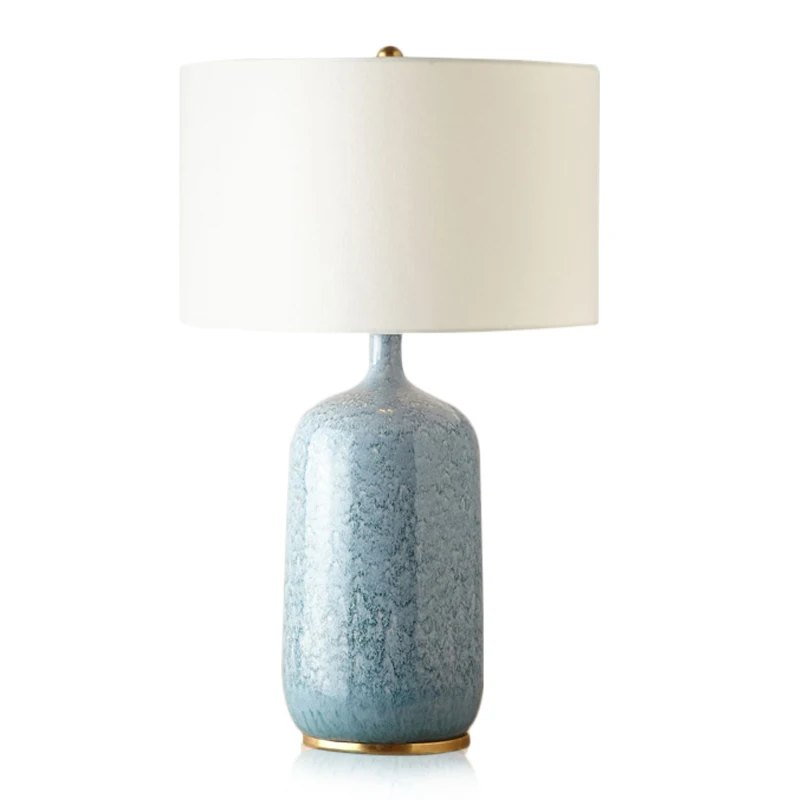
LEAFLETS
PRODUCTS
More Than Just Light A Comprehensive Guide to Table Lamp Styles
Understanding the Basics: Material, Shape, and Size
Before delving into specific styles, it's crucial to understand the fundamental elements that contribute to a table lamp's overall character. The material of the base and shade significantly impacts the lamp's aesthetic. A sleek metal base can lend a modern, minimalist feel, while a ceramic or wooden base might evoke a more traditional or rustic atmosphere. The choice of material influences not only the visual appeal but also the durability and longevity of the lamp. Consider the weight and stability of the base, particularly for lamps placed on precarious surfaces.
The shape of the base and shade are equally important. A classic urn-shaped base paired with a drum shade offers a timeless elegance. Conversely, a geometric base and a contemporary shade can create a bold, modern statement. Think about the proportion of the base to the shade; a well-balanced lamp will feel harmonious and visually appealing. Size also plays a crucial role. A small lamp may get lost in a large space, while an oversized lamp can overwhelm a smaller room. Consider the scale of the lamp in relation to the surrounding furniture and the overall dimensions of the room.
Classic Table Lamp Styles: A Timeless Appeal
Many classic table lamp styles have endured the test of time due to their elegant simplicity and adaptability to various interior design schemes. The ubiquitous Tiffany lamp, with its stained-glass shade and intricate detailing, exemplifies this enduring appeal. Its vibrant colours and handcrafted quality add a touch of artistry to any setting, whether it's a traditional living room or a more eclectic space.
Another classic is the candlestick-style lamp, characterized by its slender silhouette and elegant curves. Often featuring a metal base and a simple fabric shade, this style exudes sophistication and refined taste. Its versatility makes it suitable for various settings, from bedside tables to desks and sideboards. Similarly, the mission-style lamp, with its simple lines and handcrafted details, represents a timeless aesthetic appreciated for its functionality and understated elegance.
Modern Table Lamp Styles: Embracing Innovation
Modern table lamp designs often prioritize clean lines, minimalist aesthetics, and innovative materials. These lamps frequently incorporate unexpected shapes and unconventional materials to create striking focal points. The use of metal, glass, and acrylic is common, reflecting a contemporary sensibility. Industrial-style lamps, with their exposed metalwork and utilitarian aesthetic, are popular choices, adding a touch of urban edge to any space.
Mid-century modern lamps, inspired by the design aesthetics of the 1950s and 60s, often feature organic shapes, tapered bases, and a blend of materials such as wood and metal. These lamps capture a sense of retro cool, effortlessly blending with contemporary décor. Architectural table lamps, characterized by their bold geometric forms and precise lines, reflect a commitment to clean design and functional minimalism, creating a sophisticated and impactful statement.
Choosing the Right Table Lamp for Your Space
Selecting the perfect table lamp involves considering several factors beyond mere aesthetics. The function of the room is paramount. A bedside lamp requires a softer, warmer light for relaxation, while a desk lamp needs brighter illumination for reading or working. The size and scale of the lamp should be proportionate to the furniture and the overall dimensions of the room. Too small a lamp will get lost, while too large a lamp will overwhelm the space.
Consider the existing décor and overall style of the room. A traditional room may benefit from a classic style lamp, while a modern space may be better suited to a contemporary design. The colour and material of the lamp should complement the existing palette and textures of the room. Finally, don't underestimate the importance of the light bulb itself. The type of bulb will influence the colour temperature and intensity of the light, significantly impacting the overall mood and ambience of the room.
Beyond Illumination: Table Lamps as Design Statements
More Than Just Light underscores the crucial role table lamps play in interior design. They are not merely functional objects; they are design elements capable of transforming a room's atmosphere and reflecting the homeowner's personal style. Strategically placed lamps can create visual interest, highlighting architectural details or drawing attention to specific areas within a room.
The right table lamp can add a layer of warmth, texture, and personality, subtly enhancing the overall aesthetic of a space. Whether it's a vintage find, a contemporary masterpiece, or a simple yet elegant design, the table lamp is a versatile and powerful tool in interior design, capable of adding both style and functionality to any home. The guide concludes by encouraging readers to embrace the creative potential of table lamps and to use them to express their individual style and create a truly personalized living environment.
SUBSCRIBE
INQUIRY










